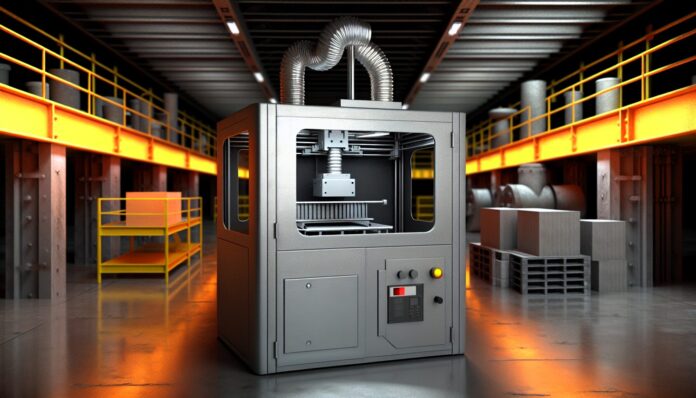Metal 3D printing is on the verge of a major leap forward, thanks to a new chamber airflow technology that promises to enhance print quality and enable larger build volumes. This innovation could reshape the capabilities of powder bed fusion (PBF) systems, one of the most widely used metal additive manufacturing methods.
How Chamber Airflow Affects Metal 3D Printing
In powder bed fusion, a laser or electron beam selectively melts metal powder layer by layer to form a solid part. During this process, the chamber must maintain a stable environment to ensure consistent results. One of the key challenges is managing the flow of inert gas—typically argon or nitrogen—within the build chamber. This gas flow removes spatter and soot generated during melting, which can otherwise contaminate the powder bed and degrade part quality.
Traditional PBF systems use a unidirectional gas flow, which can lead to uneven removal of byproducts and inconsistent thermal conditions across the build area. These issues become more pronounced as the build volume increases, limiting the scalability of current systems.
Breakthrough in Chamber Airflow Design
Researchers and engineers have now developed a new chamber airflow system that addresses these limitations. By optimizing the direction, velocity, and distribution of gas flow within the chamber, the new design ensures more uniform removal of spatter and better thermal management. This results in improved part quality, reduced defects, and the ability to scale up the build volume without compromising performance.
The new airflow system uses a combination of computational fluid dynamics (CFD) modeling and experimental validation to fine-tune the gas flow paths. The result is a more controlled and efficient environment for metal 3D printing, especially for large-format builds.
Implications for Large-Scale Metal Additive Manufacturing
This advancement opens the door to larger and more complex metal parts being produced via additive manufacturing. Industries such as aerospace, automotive, and energy—which require large, high-performance metal components—stand to benefit significantly. With better chamber conditions, manufacturers can achieve higher throughput, lower scrap rates, and more consistent mechanical properties across large parts.
Moreover, the improved airflow system could reduce the need for post-processing and rework, further lowering production costs and time-to-market. It also enhances the repeatability of the process, a critical factor for industries that demand high reliability and certification.
Future Outlook and Industry Adoption
As this new chamber airflow technology is integrated into next-generation metal 3D printers, we can expect to see a shift in how manufacturers approach large-scale additive manufacturing. Equipment makers are likely to adopt this innovation to differentiate their systems and meet the growing demand for larger build volumes without sacrificing quality.
In the long term, this could lead to broader adoption of metal 3D printing in production environments, not just for prototyping or small-batch manufacturing. The ability to print larger, high-quality metal parts reliably and efficiently is a game-changer for the industry.
Source: All3DP

